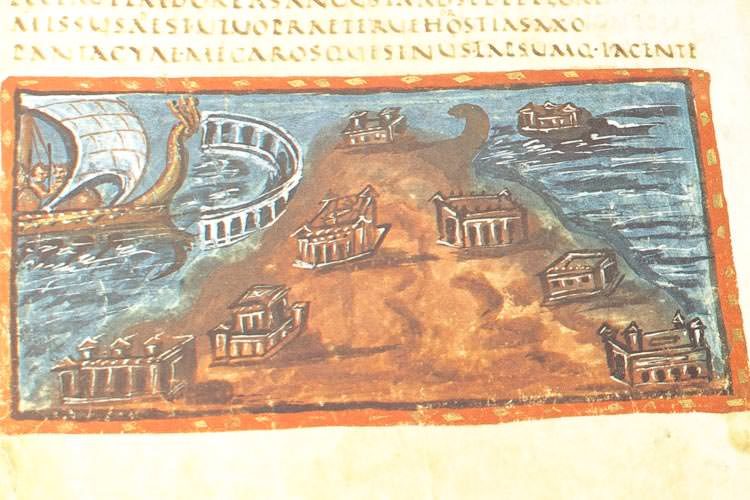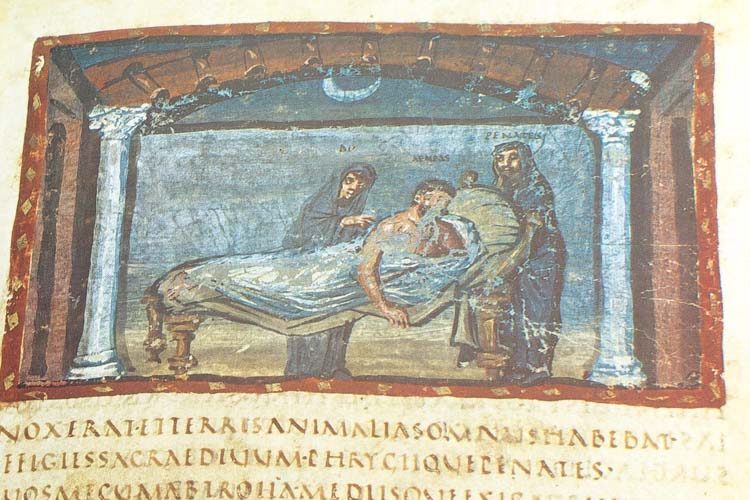Made in Rome in the decades after 400, the Vergilius Vaticanus, an illustrated collection of Vergil’s main works, was so influential in Western art that it served as a model in the artistic circle of Raphael.

The Vergilius Vaticanus is one of the best manuscripts in the Greco-Roman tradition. Moreover, it is one of the oldest sources of Virgil’s Aeneid, the epic poem about the fall of Troy, and of the Georgics, one of the earliest bucolic poems. But it is also the oldest of only three manuscripts from the classical age (it was composed around 400 AD) containing illustrations of classical literature. The text is flanked by 50 vividly executed miniatures, whose buoyant color can be easily likened to Pompeian wall paintings, which in turn had derived from Greek models.
Vergilius Vaticanus: a Unique Testimony to Late Roman Illustration
Though scholars have not been able to identify the scriptorium where the Vergilius Vaticanus was crafted, we are sure it hosted absolute experts in their field. The scribe first penned the text, in an extremely elegant Rustic Capital, a script that at the time was often used for de-luxe manuscripts. Then he outlined the pictorial cycle, leaving space for numerous illustrations. The latter were subsequently crafted by three different artists who possibly took their inspiration from model books. The decorations were also completed with ornate golden frames, detailed landscapes and architectural details. The characters’ proportions still strike us nowadays: a typical feature of the classical style, it can be found in many examples, such as the paintings in Pompeii.
At the Origin of Virgil’s poems
As it is nowadays, the Vergilius Vaticanus includes snippets of two of Virgil’s most renowned works. However, in its original form, the book must have contained full texts of these works, that is all of Virgil’s opus. It must have had approximately 440 pages, and about 280 illustrations. Even though this must have been a de-luxe codex, its ‘handy format’ is still particularly evident. One of the most famous authors of classical antiquity, Virgil’s Georgics were used as a basic text in the classroom even during his time. His Aeneid, on the other hand, was published on the initiative of Caesar Augustus against the author’s will: it was an instant best-seller. Though at the time the Vergilius Vaticanus was composed Christianity had already become the Empire’s official religion, the codex was likely commissioned by a pagan nobleman enamored with classical texts.
NEW WEEKLY VIDEOS
Find our more about Boccaccio’s Decameron (Paris, Bibliothèque de l’Arsenal) on our website!
Find our more about the Treatise on Hunting and Fishing (Venice, Biblioteca Nazionale Marciana) on our website!







